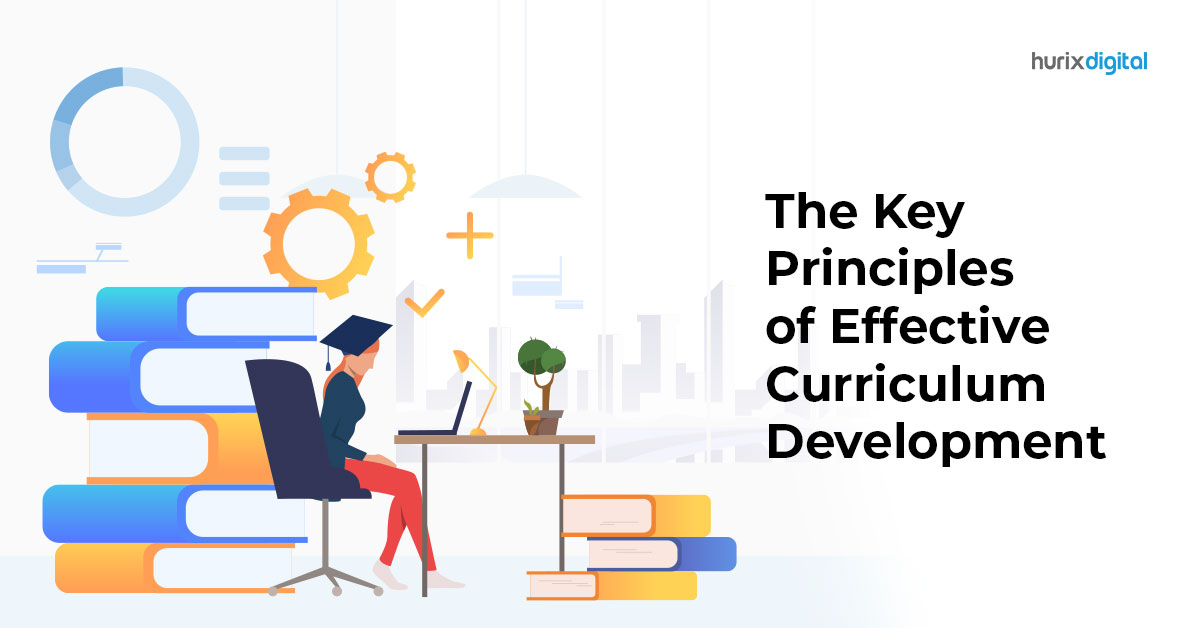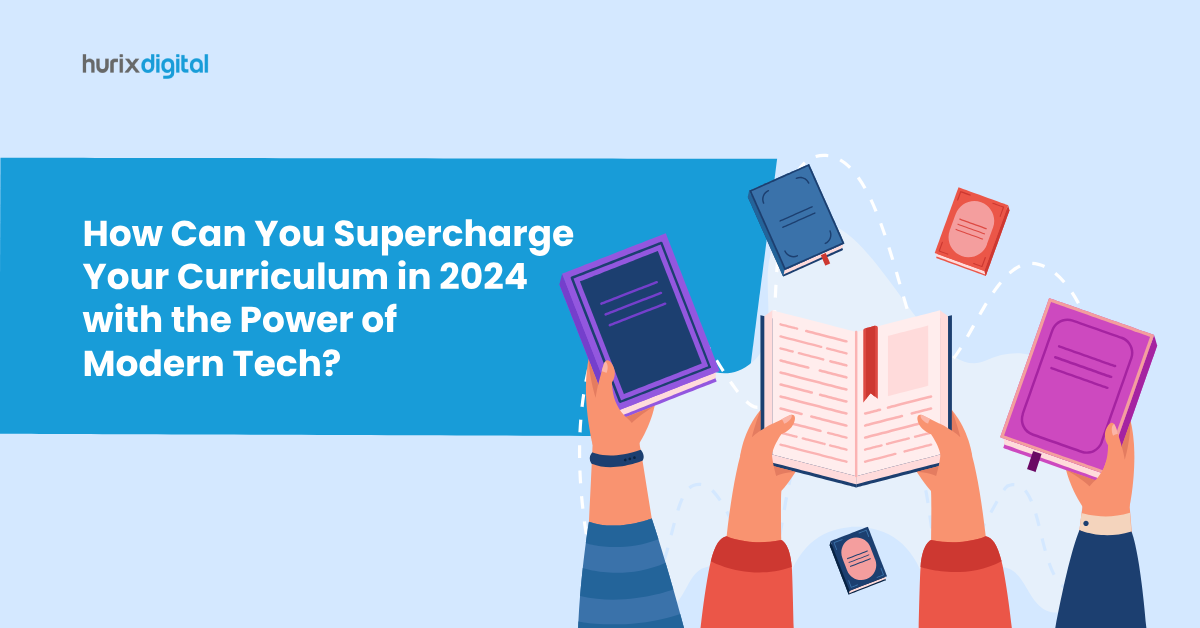
10 Trends & Predictions That Will Shape the Future of Curriculum Development
The blog post highlights ten emerging trends poised to transform K12 curriculums significantly. These trends encompass blended, personalized, and immersive learning experiences. It advocates for partnerships with EdTech firms to integrate these innovations.
The technological advancements, globalization, accessibility, and renewed principles of future curriculum formation and design have spurred many changes in the educational sector.
Now, innovations are happening rapidly in many fields, but the education sector is lagging. It has a lot of catching up to do. A good place to start is changing the curriculum.
The curriculum is the core of every course and learning process. Making thoughtful improvements to it is the only way to move forward.
In other words, curriculum development is the need of the hour.
Table of Contents:
- Ten Trends That Will Shape the Future of Curriculum Development
- Summing Up
- Frequently Asked Questions (FAQs)
Ten Trends That Will Shape the Future of Curriculum Development

Here are the 10 significant trends and forecasts that are reshaping the future curriculum development scenarios, design, and solutions!
1. Blended Mode of Learning
Blended or hybrid learning is gaining popularity for making education accessible and attainable for every student, especially those living in remote areas.
Blended learning brings together the good features of classroom learning and online learning. It allows students to virtually attend classes from their homes or physically attend classes in school.
Blended learning makes education flexible and, at the same time, better structured, enhancing students’ learning experience.
Also Read: The Importance of Curriculum Development in Enhancing Teaching and Learning
2. Personalized Learning
Every student has a different learning style. Because of this, personalized learning takes a student-centric approach and tailors learning courses to meet each student’s needs.
Combining the powers of AI and personalized learning will make education more powerful and develop a self-driven attitude in students from an early age. This will help them through their adult lives. Key predictions include:
- AI-driven Personalization: Algorithms will examine learner data and recommend customized learning paths, resources, and assessments.
- Competency-Based Education: Curriculums will focus on time-based growth and progress, whereby learners can lead based on competency.
- Increased flexibility: The learner can choose courses, topics, and learning formats that best suit their goals at will.
Personalized learning means that learning becomes a unique journey for every learner, maximizing engagement and outcomes.
3. AI and Gamification
Gamifying the way education is delivered with the help of K12 ed-tech companies will make education engaging. It will also increase students’ interest and encourage them to participate actively in learning activities.
In addition, it will motivate the students to perform better and rank higher on the leaderboard than they do now.
Gamification will improve the overall learning process and result in the formation of an interactive classroom environment.
Artificial intelligence is redefining the curriculum design by making it more dynamic, interactive, and data-driven. The AI in education market was at $2.5 billion in 2022 and is expected to reach $80 billion by 2032, especially considering the growth in generative AI. In the future, AI is expected to play a role in the following ways:
- Adaptive Learning Systems – With AI, learning delivery content will be adjusted immediately based on learner performance.
- AI in Curriculum Creation – The AI-based system automatically helps teachers and other educators prepare content, detect gaps, and align it with existing standards.
- Virtual Tutors and Chatbots – AI tools will offer individualized support, answering questions and offering guidance outside of the traditional classroom hour.
AI will streamline curriculum design processes, recreate curriculum designs, enhance learning experiences, and provide insights from data to constantly improve education.
4. Collaborative Global Learning
Collaborative learning involves students working in small groups to complete a task, create a product, or solve a problem. This collaboration facilitates discussions and helps students voice their points of view.
Listening to differing points of view develops the quality of open-mindedness and also improves their understanding of concepts.
Collaborative learning increases students’ engagement and builds interpersonal skills, prerequisites for success in every field today.
Globalized studies require education to better prepare learners for cultural diversity and international challenges in today’s world. Projections include:
- Inclusion of Global Case Studies: Curriculum should incorporate global issues such as climate change, migration, and technology ethics.
- Language and Culture Education: Programs will focus on multilingualism and transcultural abilities.
- Shared Learning Boundary-Crossing: Technology will allow students from different countries to collaborate on certain projects and share cultures.
This trend will equip learners with the knowledge to thrive in interdependent societies.
5. Immersive Learning
Digital curriculum providers now offer VR (virtual reality) and AR (augmented reality) )-based learning. VR and AR enable students to interact with their course material in 3D, thus creating an immersive learning experience.
They simplify complex concepts by making them realistic and also add an element of exploration to the learning process.
AR and VR are expected to grow at 18.2% CAGR from 2022-27 in the education sector. As a result, in the future, AR and VR will completely change the way students learn and the way teachers teach.
Immersive technologies such as AR/VR will revolutionize how curriculum delivery happens. Predictions for this trend are:
- Immersive technologies, learning, assessment, and curriculum push students to engage and be motivated.
- Simulation-Based Curriculum Designs: Allowing learners to virtually go through historical landmarks, conduct science experiments, or practice skills in simulations close to real life.
- Scenario-Based Training: Allowing learners to apply knowledge in real-life scenarios safely and away from harm.
These will make learning more exciting, involving, and experiential.
6. Mobile-First Learning with Data Insights
Statista expects there to be 7.49 billion mobile phone users globally by 2025. This means that mobile-first learning is here to stay.
Mobile-first learning refers to accessing the course content on mobile-based devices. It allows students to access educational resources at a time and place of their convenience.
Implementing mobile-first learning will ensure that learning continues to take place outside the boundaries of the classroom. Forecasts suggest that:
- Teachers will use data on learner performance and engagement to identify the curriculum’s strengths, weaknesses, and gaps.
- Data insights will be able to predict trends and adapt curricula to future demands.
- Real-time data will enable continuous improvement of content and teaching strategies.
- Curriculum development will focus on evidence-based curricula that cater to learners’ needs.
7. Micro-Learning and Life-Long Learning
Micro-learning, also known as bite-sized learning, is an approach to learning where complex topics are divided into small digestible chunks. Micro-learning prevents burnout by reducing cognitive overload.
Micro-learning also improves students’ focus and leads to better knowledge retention. Owing to its benefits, many K12 curriculum development companies now offer course material in multimedia-rich bite-sized chunks.
The idea that future curricula would be designed for lifelong learners is marked by the change in upskilling demand and the transformation that industries are facing. Predictions for this trend include a focus on soft skills. Curricula will be designed to prioritize skills like adaptability, creativity, and the ability to communicate. This shall prepare learners for changing job roles.
8. Disability-Accessible Learning
A current trend in curriculum development is about making learning accessible to K12 students with disabilities, including blindness, speech deficits, deafness, photosensitivity, etc.
Owing to this, educational institutions have started ensuring that their websites are WCAG-compliant. Many e-learning K12 companies have also started providing screen-reader-friendly and easy-to-understand content that includes the learning needs of differently-abled students. Anticipated trends include:
- Universal Design for Learning: Curricula will be crafted to be learner-sensitive with respect to learning styles, abilities, and culture.
- Assistive Technologies: Screen readers, captioning, and adaptive interfaces will all make it easier for the learner with a disability.
- Digital Divide: Initiatives will now help bridge the gap in technology access to enable equity for access to remote learning opportunities
This will ensure that education is inclusive to help learners succeed.
9. Social-Emotional Learning
The pandemic brought the mental health crisis to the forefront. The likelihood of children suffering from stress, anxiety, depression, and other mental health disorders has drastically increased.
Suicide has reportedly become the second leading cause of mortality among 10 to 14-year-olds. All this has created a need to include social-emotional learning (SEL) in educational content development.
SEL focuses on developing self-awareness, control, management, and interpersonal skills of K12 students and teachers through academic resources, systems, and programs. It also assists them in becoming mentally and emotionally strong.
10. Project-Based Learning
Alternatively referred to as learning by doing, project-based learning (PBL) is a teaching strategy that allows students to build their skills and knowledge through projects based on problems and obstacles they may encounter in the real world.
PBL fosters the development of technical abilities and skills in students and prepares them to face the workforce. At the same time, PBL stimulates the growth of soft skills like problem-solving, teamwork, and critical thinking skills.
PBL focuses on providing a holistic learning experience to K12 students, so it is crucial to implement it in curriculum development.
Predictions include the following:
- Programs with real-life issues that blend concepts from several disciplines.
- Students will be engaged in hands-on projects on community and workplace issues.
- By implementing entrepreneurial mindsets, curricula will encourage students to be innovative, think critically, and seek solutions.
- Interdisciplinary curricula will prepare learners for challenging, complex career and community modules.
Also Read: Ingenious Ways of Personalizing the K12 Online Learning Experience with AI
Summing Up
The curriculum of K12 students needs to undergo many developmental changes. Implementing the current and emerging trends in your educational institution’s curriculum is a great place to start.
It’s no secret that curriculum transformation alone can be time-consuming and resource-intensive. So, if you want a hassle-free curriculum development experience, contact Hurix.
Hurix Digital offers custom learning solutions for elementary, middle, and high school student’s education. It provides multilingual multimedia-rich content, game-based learning, simulation-based learning, and more. In addition, Hurix is the trusted preference of educational companies like Wiley, Cambridge University Press, Carnegie Learning, etc.
Our team can help you to expedite your curriculum development process.
Frequently Asked Questions (FAQs)
Q1. How does gamification affect learning, and what benefits does it provide?
Gamification challenges students to be more interested and motivated. It encourages real participation, enhances the learning process, and builds an interactive atmosphere in the classroom.
Q2. What is immersive learning with VR and AR, and how will it change education?
Immersive learning using VR and AR provides 3D interaction with course content, making complicated ideas easier to understand and enhancing students’ learning. It will forever change how people learn and how educators teach.
Q3. How does curriculum development incorporate accessibility for students with disabilities?
Curricula development is focused on making learning accessible to students with disabilities. Content should be focused on WCAG standards, screen-reader friendly, and account for the myriad needs of differently-abled learners.
Q4. How can educational institutions make the most of emerging trends in curriculum development?
Educational institutions must embrace modern methods and trends, such as blended learning, personalized learning, and gamification, to create a modern curriculum.
Q5.Why should one choose custom learning solutions from Hurix Digital for K12 education?
Hurix Digital provides custom learning solutions for K12 education, including multimedia-rich content, game-based learning, and simulations. These solutions strengthen the educational experience and are trusted by some of the leading education companies.

Senior Vice President
A Business Development professional with >20 years of experience with strong capability to sell new solutions and develop new markets from scratch. New Market Entry Specialist with experience of working in two of the largest emerging markets – China & India. Also covered other key markets in APAC, US, EU & ME. Exceptional experience of conceptualizing, ideating and selling new learning technologies like VR AR, etc. across multiple industry verticals.








